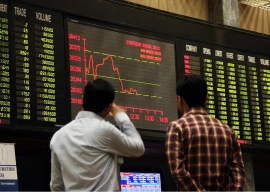
OPEC oil output has fallen in July after Saudi Arabia made an additional voluntary cut as part of the OPEC+ producer group’s latest agreement to support the market and an outage curbed Nigerian supply, a Reuters survey found on Monday.
The Organisation of the Petroleum Exporting Countries has pumped 27.34 million barrels per day (bpd) this month, the survey found, down 840,000 bpd from June. That’s the lowest since September 2021 according to Reuters’ surveys.
Saudi Arabia pledged to cut output by 1 million bpd in July as part of OPEC+’s deal in June which limits supply into 2024. Oil has begun to rally in response, with Brent crude trading above $85 a barrel, up from near $71 in late June.
The Saudi move, which Energy Minister Prince Abdulaziz bin Salman called a “Saudi lollipop”, came on to top of earlier voluntary cuts that Riyadh and several other members of OPEC+ had announced, and added to reductions made under a late 2022 OPEC+ agreement.
Increases in Angola and Iraq due to higher exports limited the decline in OPEC output in July, the survey found.
OPEC’s output is still undershooting the targeted amount by almost 1 million bpd partly because Nigeria and Angola lack the capacity to pump as much as their agreed level.
Saudi Arabia lowered output by 860,000 bpd month-on-month, the survey found. Figures from Kpler show crude exports down over 600,000 bpd month-on-month, although another tanker tracker found a smaller export decline.
The second-biggest decline was in Nigeria where Shell suspended loadings of Forcados crude due to a potential leak at the export terminal. Libyan output edged lower due to a brief stoppage at some fields due to a protest. The Reuters survey aims to track supply to the market. It is based on shipping data provided by external sources, Refinitiv Eikon flows data, information from companies that track flows such as Petro-Logistics and Kpler, and information provided by sources at oil companies, OPEC and consultants.
Oil set for biggest monthly gains in over a year
Meanwhile, oil prices were set to post their biggest monthly gains in over a year, on Monday, on expectations that Saudi Arabia will extend voluntary output cuts into September and tighten global supply.
More actively traded October Brent crude futures rose 73 cents, or 0.9%, to $85.14 a barrel by 1532 GMT. The September Brent contract, which will expire at settlement on Monday, was trading 0.6% higher at $85.52 a barrel.
US West Texas Intermediate crude futures rose 85 cents, or 1.1%, to $81.43 a barrel.
Brent and WTI settled on Friday at their highest levels since April, gaining for a fifth straight week. Both are on track to close July with their biggest monthly gains since January 2022.
Saudi Arabia is expected to extend a voluntary oil output cut of 1 million barrels per day (bpd) for another month to include September. Saudi’s output curtailment and production outages in Nigeria lowered output from OPEC, said the Reuters’ survey on Monday.
Supplies are also beginning to tighten in Europe and the US, where the government has begun the process of refilling the Strategic Petroleum Reserve from its lowest level in multiple decades.
“After the end of SPR releases and recession fears and a liquidity drain due to bank stability fears which caused the markets to ignore a looming supply squeeze, the coming supply deficits are getting too big to ignore,” Price Futures Group analyst Phil Flynn said.
Goldman Sachs estimated that global oil demand rose to a record 102.8 million bpd in July and it revised up 2023 demand by about 550,000 bpd on stronger economic growth estimates in India and the US, offsetting a downgrade for China’s consumption.
However, a Reuters poll of 37 economists and analysts on Monday forecast oil prices to stall this year as high interest rates curb demand, offsetting the impact of OPEC+ production cuts on supply.
The survey predicted front-month Brent oil would average $81.95 a barrel in 2023, down from June’s $83.03 consensus.
Published in The Express Tribune, August 1st, 2023.
Like Business on Facebook, follow @TribuneBiz on Twitter to stay informed and join in the conversation.

1729662874-0/One-Direction-(1)1729662874-0-405x300.webp)


1722421515-0/BeFunky-collage-(19)1722421515-0-165x106.webp)




1732084432-0/Untitled-design-(63)1732084432-0-270x192.webp)








COMMENTS
Comments are moderated and generally will be posted if they are on-topic and not abusive.
For more information, please see our Comments FAQ